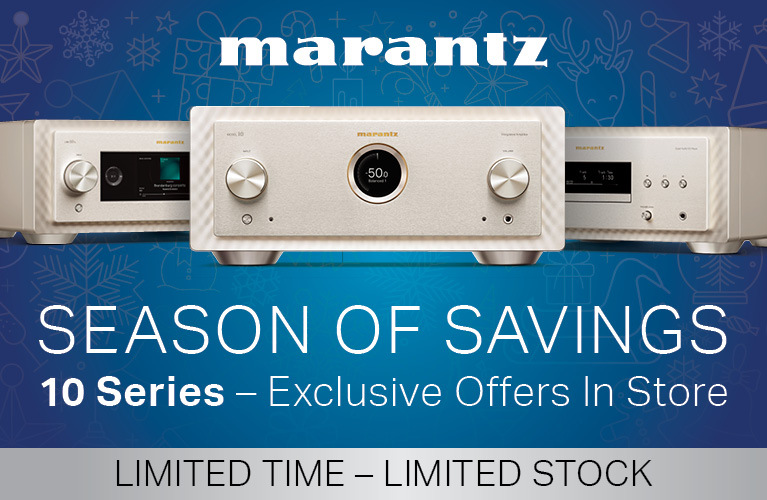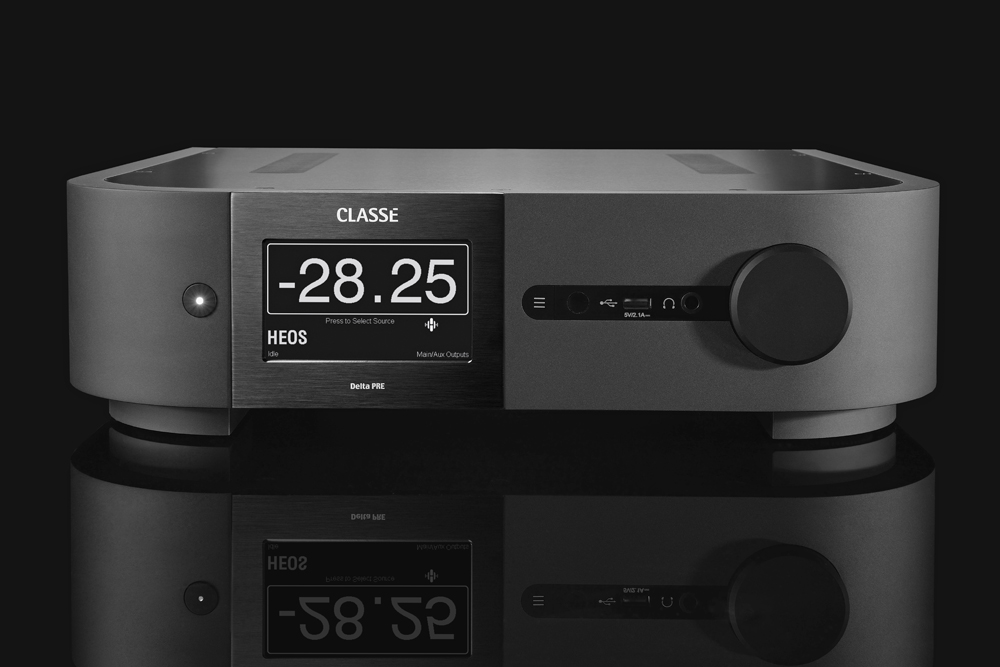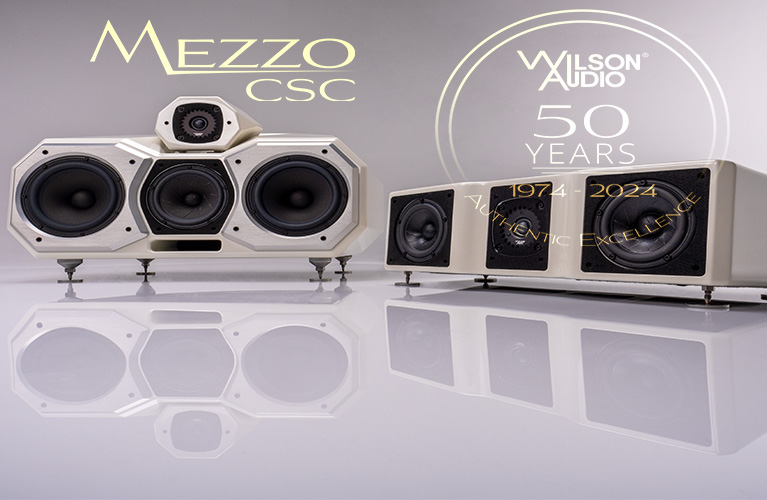On its website, Classé Audio states that the new Delta PRE Mk II preamplifier can be the “foundation of your perfect system”. In this case, it’s quite sensible marketing parlance because I’m also of the opinion that the good ole preamplifier is, indeed, the very heart of an audio system. On paper, the extra circuitry and interconnecting cable required to connect said preamplifier should be a backward step when compared to the simplicity of interfacing a DAC, for example, directly to a power amplifier. After all, there’s more than enough output voltage on tap there and most have an in-built volume control (bit-stripping notwithstanding). Yet, it’s been my experience that having that preamp intermediary almost always equates to a more engaging and dynamic sound. Never mind the obvious accommodation of additional sources. So, how would a high-tech, fully featured, 21st century preamplifier like Classé Audio’s new Delta PRE Mk II perform then?
When the River Meets the Ocean
The Delta PRE Mk II preamplifier continues the rather attractive aesthetic design which Classé Audio has intelligently applied across a number of Delta series generations. Aside from its elegance, the build quality is first-class, and the feature count is… well, phenomenal. Plus, in this Mk II version, we now have HEOS built-in which opens the gate to music service streaming and multi-room control. Talking solid state preamplifiers, there’s a stream of contemporaries of the Delta PRE Mk II who also aim at providing a plethora of functionality and configuration possibilities. Yet, Classé has a trick or two up its sleeve in terms of streaming options which others can’t quite match. So, given the myriad of functions and features available to go through, let’s jump into it.
Firstly, the Delta PRE Mk II offers a richness of connectivity options. Plus, going back to the concept of reduced box counts, there’s a built-in digital-to-analogue converter, a Moving Magnet (MM) and Moving Coil (MC) phono stage, and a quality headphone amplifier. That’s three boxes and at least three interconnecting sets of cables made obsolete right there.
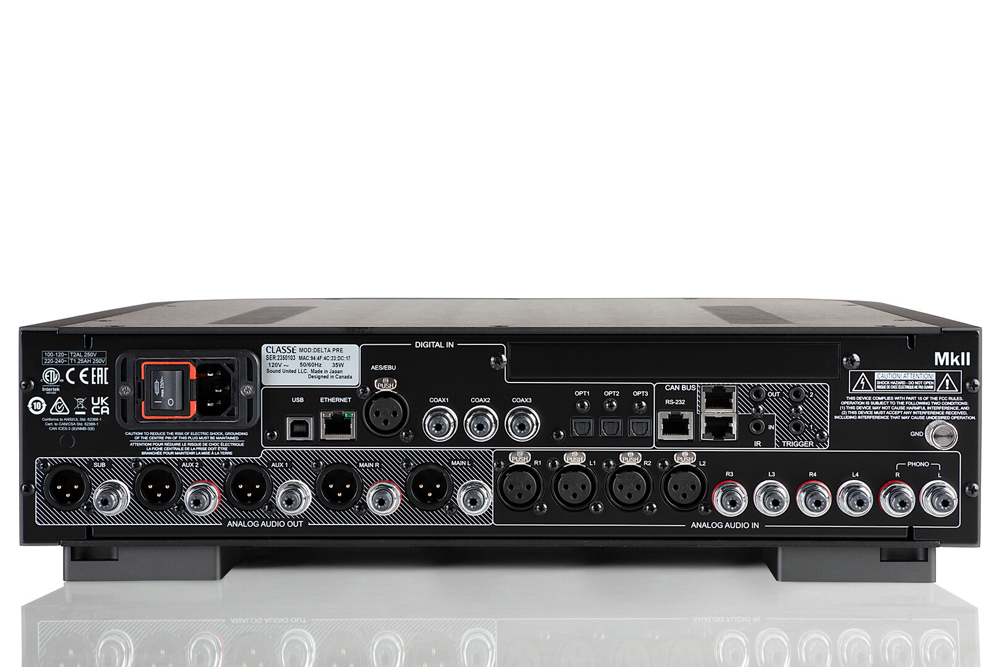
The DAC offers dual 32-bit/384 kHz AKM4497EQ DAC chips configured to run in ‘Differential Mono’ mode. The on-board DAC is capable of handling PCM resolutions at up to 32-bit/768 kHz and DSD512 via the USB-B port while also being MQA compatible. A HDMI board is available as an option which supports 4K via four inputs and a single output. The digital connectivity includes three S/PDIF coaxial RCA sockets, an AES/EBU XLR socket, USB-B for audio, three optical Toslink sockets, and an RJ45 network ethernet port. Further RJ45s include one RS-232 and two Can bus ports. There are 3.5 mm mini-jack sockets for 12V trigger in/out and for a cable remote control/repeater.
The in-built phono stage caters to Moving Magnet (MM) and Moving Coil (MC) cartridges via a set of stereo RCA inputs located just below a ground post. The MM configuration provides load options spanning from 50 pF to 450 pF with seven settings in between, Gain is 41.5dB. The MC low output options are 7.5 ohms to 1 kohms (60dB gain) with six intermediary settings, while the high output option is the standard 47 kohms (41.5dB gain).
Analogue connections include two balanced XLR and unbalanced RCA inputs, while outputs feature balanced XLR, unbalanced RCA, two Subwoofer Out (via both XLR and RCA) and two stereo Auxiliaries with both XLR and RCA sockets. ‘Pass-Through’ mode is available for home theatre integration. By the way, all RCA sockets are high quality Furutech while the XLRs are Neutrik.
Finally, a front panel 6.5 mm jack socket provides headphone connectivity to the on-board headphone amplifier. Said amplifier is specified with a 6.8 ohms output impedance. A number of listening sessions showed the built-in amplifier to provide a clean, clear and dynamic presentation which will keep up with upgrades as you escalate the high-end headphone ladder. Again, very competent engineering here.
Streaming is available for Tidal, Spotify, Qobuz (upcoming update as at review date), Amazon Music HD, Deezer, Pandora, iHeartRadio and many other music services. Delta PRE Mk II is Roon Ready, features DNLA NAS drive support, and there’s Airplay 2 and Spotify Connect compliance. File format compatibility covers just about all formats, including WAV, FLAC, AIFF, ALAC and much more. Further streaming is available via the USB-B port on the rear panel, and through the USB-A on the unit’s front fascia.
As mentioned above, HEOS is now built-in. I downloaded the iOS version of the HEOS app to test out via my iPhone 15 Plus. The entire setup process was intuitive thanks to the well-designed HEOS app, which I found to be solid, stable and user friendly. The endless selection of TuneIn radio stations were easily accessible and playback was seamlessly efficient. Had lots of fun searching through loads of College Radio stations and was pleasantly surprised with the audio quality at 128 kbps.
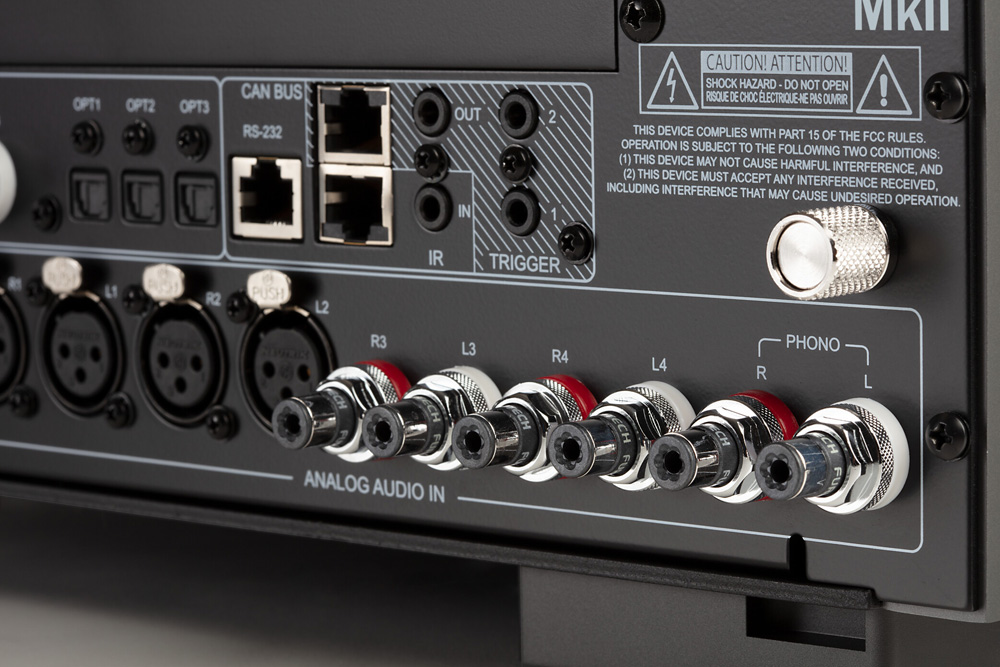
Delta PRE Mk II features an on-board five-band/channel digital domain parametric EQ offering selectable frequency, slope and tone adjustments. All features are accessible from the unit’s comprehensive menu options via the remote controller and front panel touchscreen display. Oh, regarding the remote control, it’s a solid metal unit with comprehensive functionality via backlit rubberised buttons. I enjoyed pointing it anywhere, away from the PRE even, with remote command success. Oh, and Classé has a free app (iOS and Android) which also provides full control of the Delta PRE Mk II.
Classé offers an upgrade path from original to Mk II via an ‘Upgrade Kit’ which is priced at AU$3000. In light of the almost identical hardware, updating the previous-gen Delta PRE to current specification is mainly a matter of software, although a physical circuit board module needs replacing. The upgrade requires installation by a certified Classé technician over at local distributor Masimo (details below) where they will also perform a general check-up and update any firmware should that be required.
As you’d expect from a modern and excellently engineered preamplifier, the technical specifications are impressive. The PRE has a gain range of -93dB to +14dB with a channel matching of 0.05dB. Input impedance is 50 ohms (at 1kHz, Balanced XLR/Single-Ended RCA) while the output impedance is 200 ohms Balanced XLR and 50 ohms Single-Ended RCA. Frequency Response is quoted as 1 Hz to 2 MHz (-3dB, 50Ω source impedance). Harmonic Distortion (measurement bandwidth: 90kHz) is under 0.0004% at 1 kHz, 0.0005% at 10 kHz and 0.0006% at 20 kHz. Intermodulation distortion (IMD) is quoted as under 0.001% while Signal-to-Noise Ratio (SNR) is given as 130dB (133dBA). If you require even more specifications, Classé provides a pretty complete list on its website.
The Delta PRE Mk II is superbly built. Classé engineers have selected high quality connectors, designed a formidably solid chassis endowed with a nicely curved fascia, and selected a bright and dimmable touchscreen, among other quality touches. The metal backlit remote control unit is a weapon and even the bespoke footers are pure class. Everything about it inspires confidence in operational efficiency, reliability and, importantly, longevity.
PREconceived
In my opinion, designing a reasonably good sounding solid state preamplifier should be a relatively straightforward task. For an adept engineer, making the circuit reasonably clean and keeping noise away from sensitive areas is a matter of routine ‘Competent Electronic Design 101’. However, designing a very good, or even truly great, solid state preamplifier with tonal precision, spatial openness, and extended dynamic expression capabilities is a more challenging proposition. Let alone packing-in a bunch of varied technologies all within the confines of a standard-sized chassis.
Solid state electronics can be complex when in the context of a modern, fully loaded preamplifier. As described above, the Classé Delta PRE Mk II packs a phenomenal list of features and functionality. Fine to provide all that capability, but how to also make the unit a standout performer? Well, pre-empting here… the Delta PRE Mk II has that covered too. It’s as quiet a preamp as I’ve experienced, while also delivering excellent levels of detail combined with pleasing listenability, accurate tonality, and satisfying dynamics.
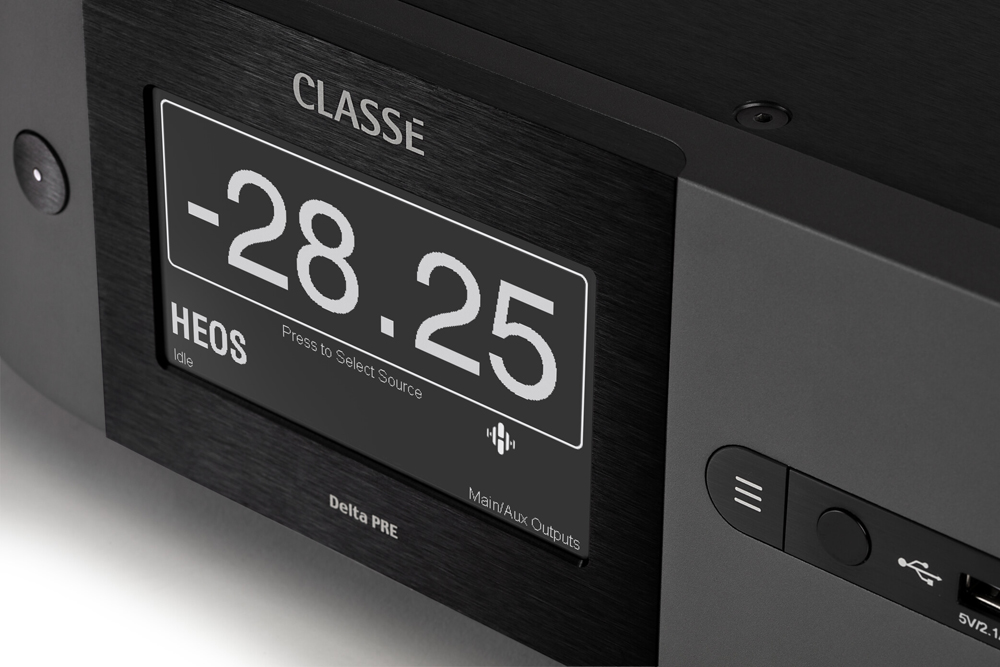
I first listened to the PRE (for short) acting as a pure preamplifier, with my reference Totaldac tri-unity DAC providing the digits. The almost analogue fluidity of the French converter was faithfully communicated via the PRE without editorialising. This preamp does not interpret, it’s just a transmitter, a pure messenger, something a great preamplifier just… does.
Having said that, should you prefer a sprinkling of 11 herbs and spices, the in-built EQ allows for customising the sound to your tastes (and room acoustics via high/low frequency adjustments). My listening was done with a flat EQ for 95% of the time though, just for kicks on some rock music, I also experimented with a subtle mid-bass lift for a tad extra kick to the kick drum. Most of my listening was via my Roon library and vinyl collection, however, I also tested HEOS and enjoyed its ease of use and super-wide internet radio accessibility.
I covered many, many genres throughout the PRE’s stay. There was a consistent… reliability to the sound PRE offers. Among many other qualities, it’s super clean and quiet, two elements which allow the music to flow. Spin a variety of stuff from Chemical Brothers to The Cruel Sea, to Rimsky-Korsakov’s Sheherazade, to Brubeck, to Metallica, and so on, and you’ll hear the music as it was recorded, without artificial sweeteners or added distortions.
That neutrality also translates to a more truthful soundstage dimensionality, as opposed to my reference valve-based preamplifier which tends to very subtly expand the soundfield in all dimensions (it can be said that’s a trait very much related to good valve designs). My usual live albums of choice, which I know intimately, such as Ani DiFranco’s Live in Clip, or Ryan Adams’ Ten Songs From Live at Carnegie Hall, Jackson Browne’s Solo Acoustic Volumes 1 and 2, and many others communicated the liveness of the event as realistically as I’ve heard from solid state preamplification. Especially on “Amazing Grace” from DiFranco’s CD, which bathed the room with a mirage mimicking a large venue. The yells and whistles from the audience seemed to emanate from way beyond the constraints of my listening room.
I enjoyed the superb levels of detail – without ever sounding etched – of the metal drums on Arooj Aftab’s World Music take on “Autumn Leaves” from her Night Reign album. The accompanying acoustic bass sounded solid, tight and deep without overpowering Aftab’s mellow, moody vocals. Said vocals stood out from the mix with excellent clarity and presence.
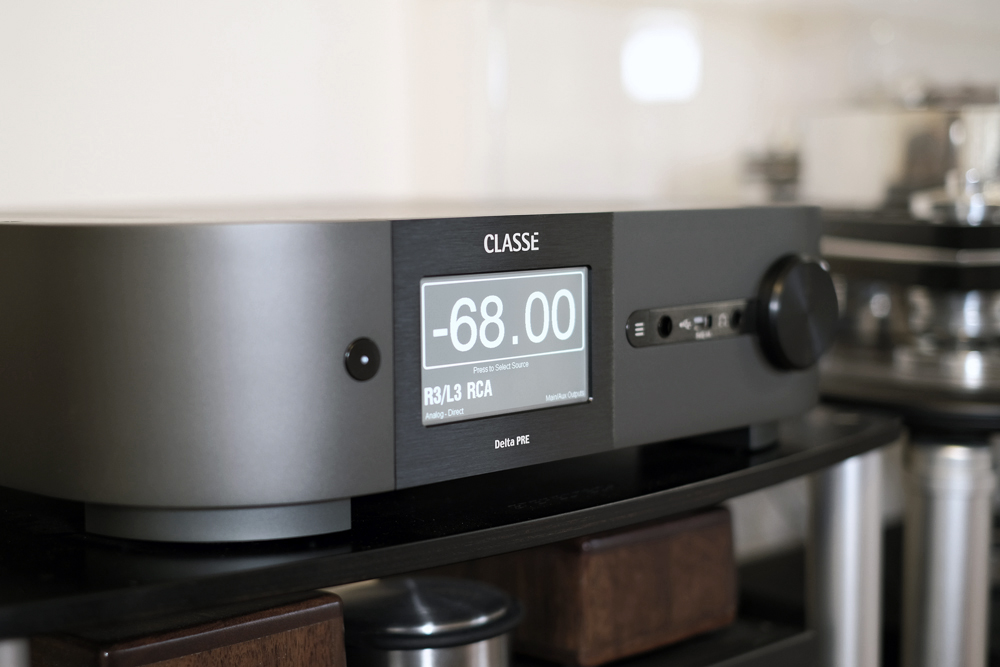
On Vital Information’s jazzy “Inception” from the album Time Flies, the complexity of drums, saxophone, bass and piano are all displayed with expert separation, each instrument living in its own space. This is both spatially, where there’s very good image placement, and also in terms of being easily able to follow each instrument’s own contribution to the overall complexity. Drummer extraordinaire Steve Smith pounds the skins with tremendous power, and the PRE has no problem in communicating the wallop and definition of Smith’s dexterity as shown by his mastery of the hectic double kick and tom-tom runs.
Speaking of master percussionists, the band Volto!, a side project by Tool’s drummer Danny Carey and his excellent jazz fusion muso colleagues, is one of my more recent discoveries. On “I’m Calm Now” from the album Volto! (yes, same as the group) the skill of the band is communicated via PRE with excellent definition through the guitar and keyboard solos while Carey – generously somewhat stepping back and allowing the others to shine – provides his signature scalpel-like precision to the percussive foundation. Even through a heavier track like “BHP” all the instruments are separated, yet still seamlessly homogenised with respect to the overall composition. Carey’s snare and kick still cut through to drive the pace and rhythmic flow. When Carey does do his drum solo thing, boy does it slam.
Testing Full Metal Jacket
Trying out the same albums and tracks as described above (and many more, of course) via the PRE’s in-built digital-to-analogue converter presented marginally – very marginally, I should stress – more immediate interpretations when comparing to my own reference.
I could sometimes talk myself into believing there was slightly more low-level detail via the PRE’s DAC. Keeping in mind the disparity in pricing regarding the following comments, the PRE’s DAC, as enjoyable as it was, lacked some of my reference’s analogue-ish sound, which makes the music flow in a more… natural manner (my Totaldac tri-unity is, after all, an over EU25K DAC direct from manufacturer). Yet, the PRE’s DAC is as good as it gets in separate DACs at up to AU$10K price point, or even more. The ‘Differential Mono Mode’-configured AKM4497EQ DAC chips are very good in this implementation.
For example, on the “Autumn Leaves” interpretation by Arooj Aftab, the metal drums had terrific resonance and tonal precision while, again, Aftab’s beautiful vocals project with credible presence.
The low frequencies on acoustic bass, in both the Arooj Aftab tracks and Steve Smith’s jazz ensemble, were once again tight and nuanced with satisfying, powerful clout. None of Smith’s super tom-tom runs lost their speed, attack, nor their individual definition, even when he mashes it all up with his powerful kick drum fills.
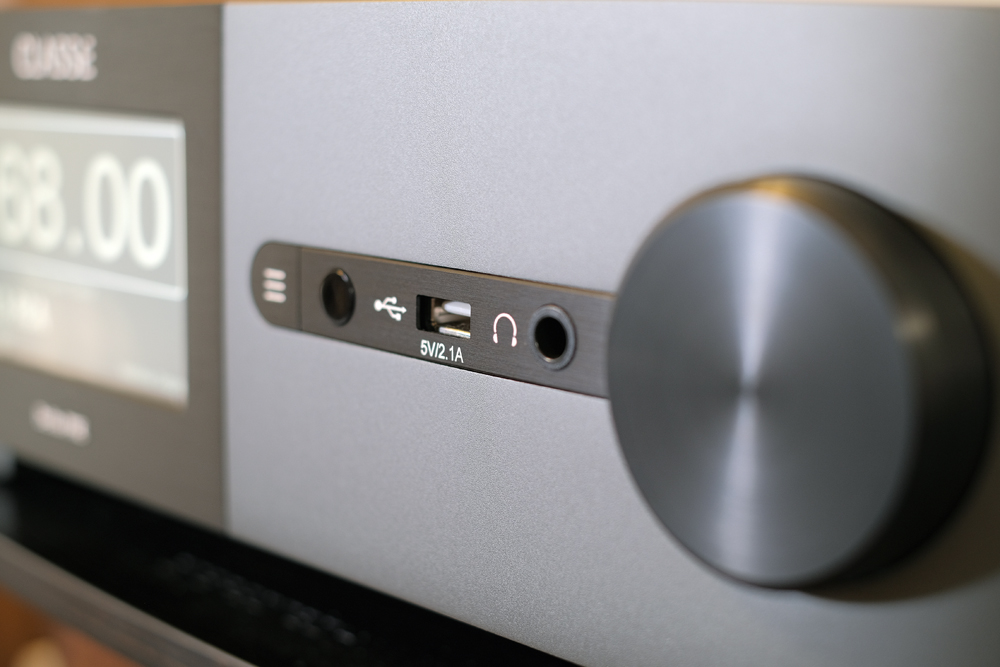
To summarise the performance of the in-built DAC, I have to say that it’s a very competent performer. Like I mentioned above, the DAC is comfortable competing with quality separate converters. I guess that summarises the current state of digital components where, in my opinion, the diminishing returns concept applies at a more affordable level than ever before, a reflection of the constant evolution of the digital playback space.
Testing the phono stage was another rather enjoyable task. On “Come Together” from the 180 gram pressing of The Beatles’ Abbey Road, the “shoot me” – if you know, you know – comes across crisply clear, yet without the brightness I’ve heard in some systems. There’s virtually zero bass overhang (aside from what’s actually meant to be there for emphasis) on that bass note from McCartney – again, you’ll know what I mean. Ringo’s kick drum is solid, punchy and so real sounding. Lennon’s vocals are never swamped by all the instrumentation and, amazingly, Harrison’s guitar is given equal spotlight time without loss of rhythm.
Impressive too was the massive soundfield I experienced when listening to Mozart Piano Concertos №s 27 & 28 (Deutsche Grammophon) with the London Symphony Orchestra conducted by Claudio Abbado, with Rudolf Serkin on piano. The piano was true of tone, with fast transient attack across the keyboard.
Speaking of accurate tone, on Marten’s heavy vinyl Supreme Sessions 1, the tenor sax, acoustic bass and drums were spot-on real sounding. This is a truly exceptional recording, which was captured at Marten’s (Swedish loudspeaker manufacturer) main audition room. It’s an acoustically excellent space, where there’s enough room for instruments to breathe. That’s also where the company shows its very best products, such as the towering Coltrane Supreme speakers.
The emotion on Frank Black’s vocals on “Hey”, from the Pixies’ Doolittle album, are well communicated via the Delta PRE Mk II’s phono stage, while the snare and the intro electric bass are superbly rendered with tightness and appropriate snap. Excellent.
Conclusion
As far as this writer is concerned, the preamplifier is the beating heart of a hi-fi system. Once purely a source switcher and volume modulating component, the modern preamp can be a digital hub comprising a high-resolution digital-to-analogue converter, a versatile streamer/network player with multi-room and wireless music capabilities, while also offering all manner of digital input/output connectivity. Like the PRE, there may even be powerful DSP capabilities. On the analogue side it may incorporate a phono stage with comprehensive gain and impedance settings, a headphone amplifier, home cinema integration and, of course, also provide a multitude of line level inputs and outputs. The Delta PRE Mk II ticks every single one of those boxes.
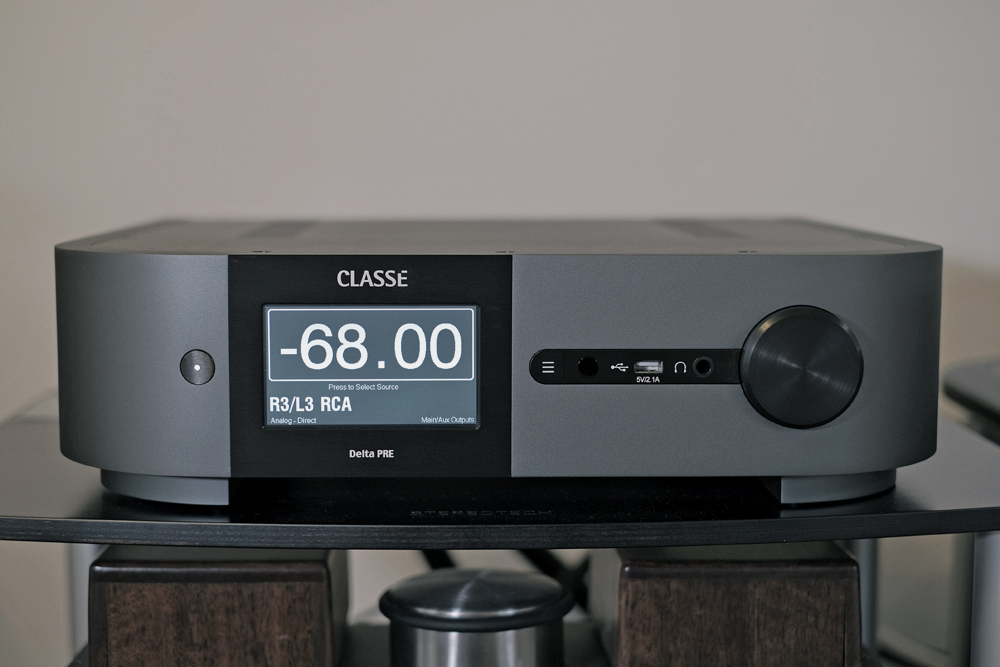
The on tap sonic performance of all its native in-built factors is… powerful. The Delta PRE Mk II sounds detailed, fluid, controlled and dynamic across its wide bandwidth. Plus, you can tailor its sound to whatever your heart desires via the on-board DSP/EQ. Or leave well enough alone. What more can you ask for?
Yes, if exceptional sound quality, versatility, and reduced box count/interconnecting cabling are all priorities, then the Classé Audio Delta PRE Mk II presents an inarguably attractive, rock solid alternative. Delta? I say Alpha.
… Edgar Kramer
This email address is being protected from spambots. You need JavaScript enabled to view it.
Associated Equipment
- Speakers — Wilson Audio Alexia V, Axis Loudspeakers VoiceBox S (nearfield monitor), Vermouth Audio Little Luccas Mk.II, Atacama stands
- Amplifier — Gryphon Audio Antileon EVO
- Preamplifier — Supratek Cortese, Totaldac d1-triunity (periodically, direct to amplifier)
- Sources — Digital: 432 EVO Aeon Mk.3 Reference Music Server/Roon Core, Yamaha CD-S2100 transport, Totaldac d1-triunity DAC. Analogue: Transrotor Crescendo with Konstant Studio controller, Reed 1X Tonearm with upgraded internal wiring, Shelter Harmony cartridge, The Funk Firm Houdini cartridge decoupler, Supratek Cortese & REDGUM Audio RGPH2 phono stages
- Processor — DEQX PreMate (part of arsenal/casual use)
- Cables — VYDA Laboratories Orion Silver Reference HFC IC and speaker cables, PSC Audio custom design XLR, Vermouth Audio Reference loom,Tubulus Concentus USB
- Audio Rack — SGR Audio Statement Model V, Aspire Audio Belgravia amplifier platform (customised for Gryphon Audio Antileon EVO), Stereotech Aluminar Dark 3-tier rack
- Acoustic Treatment — Vicoustic Multifuser Wood, Wavewood Ultra, Cinema Round Premium and Super Bass Extreme
- Miscellaneous — Silent Angel Bonn N8 Pro network switch, GigaWatt PF-1 EVO power strip, Les Davis Audio Viscoelastic CLD discs, Voodoo Cable Iso-Pods, Bocchino Audio Mecado, VRC Vinyl Record Cleaning system plus miscellaneous accessories
Classé Audio Delta PRE Mk II Preamplifier
Price: AU$19,900
Australian Warranty: Five Years Global
Australian Distributor: Masimo Consumer
+61 2 9196 8990
https://masimoconsumer.com.au
Classé Audio
5070 François Cusson Lachine
Québec H8T 1B3
Canada
+1 (514) 636 63 84
www.classeaudio.com

